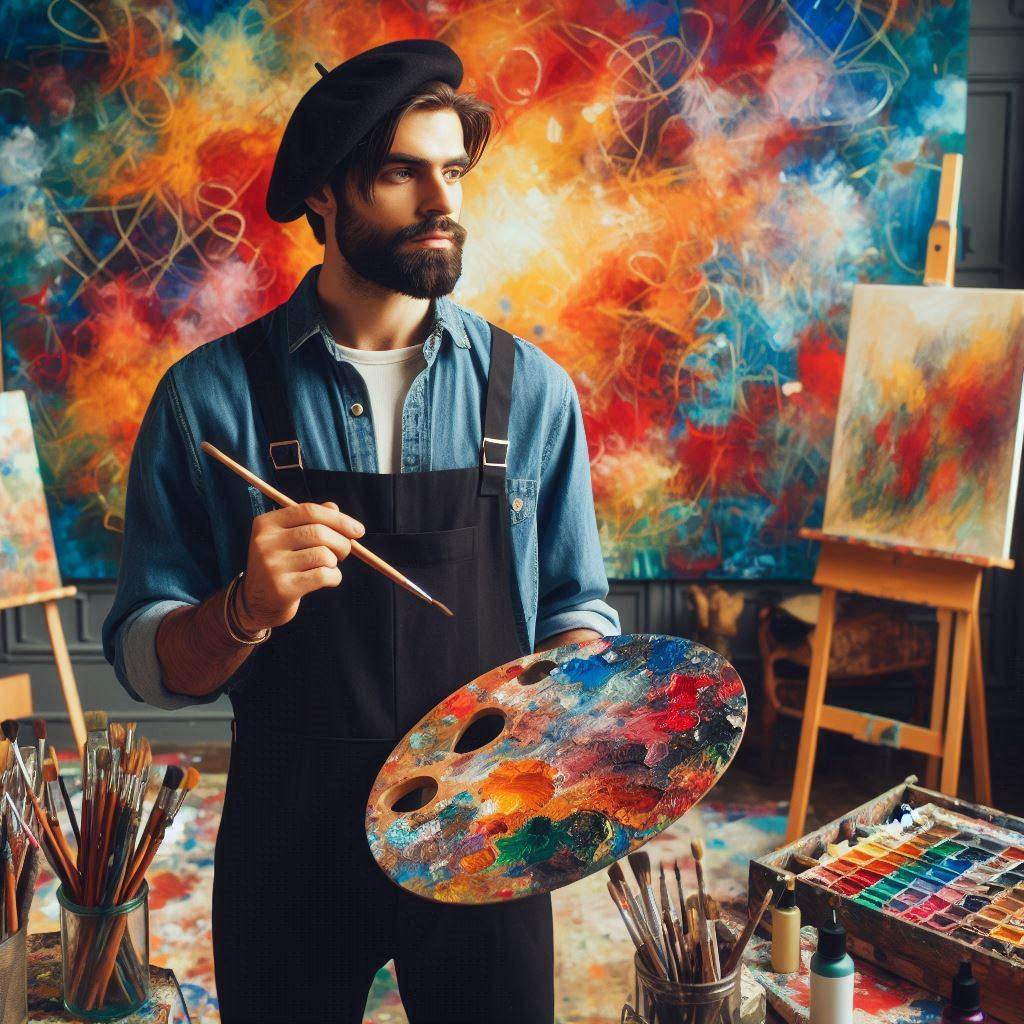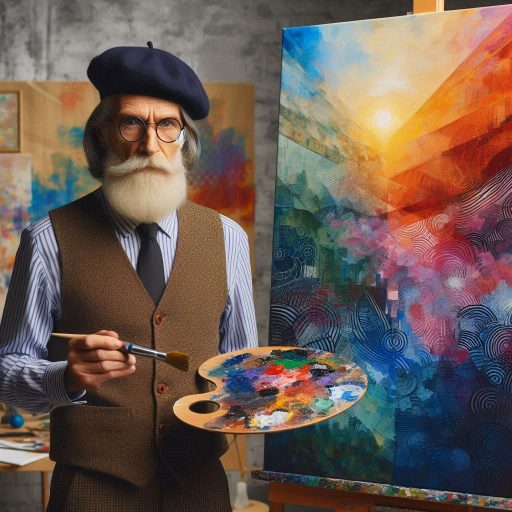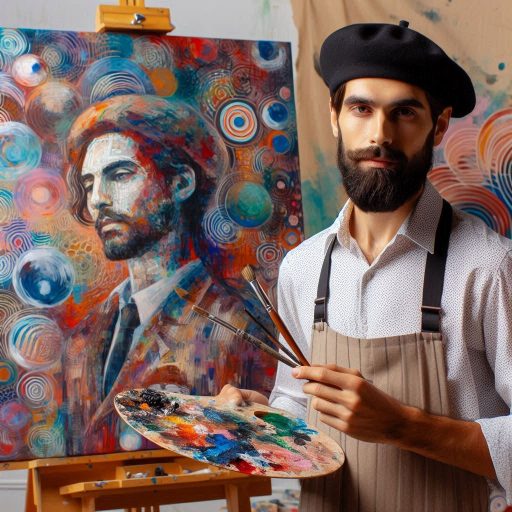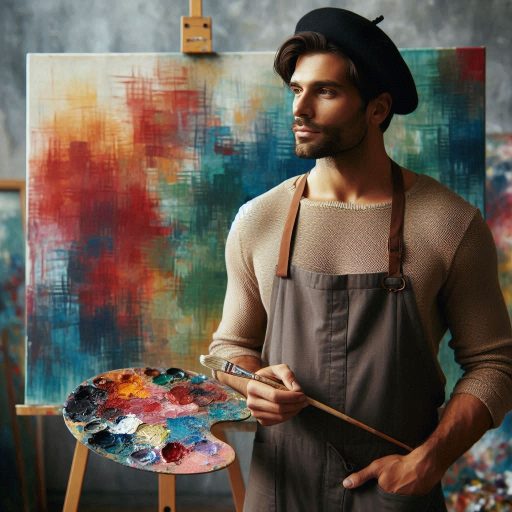Introduction
Career guidance plays a crucial role in the field of art and design, serving as a beacon for aspiring creatives navigating the diverse landscape of this vibrant industry.
With the constant evolution of creative practices, technological advancements, and shifting market demands, many individuals often feel overwhelmed by the multitude of options available to them.
Effective career guidance helps artists and designers identify their strengths, interests, and values, enabling them to make informed decisions about their futures.
Understanding the various skills required for different roles is essential in this creative realm.
Career guidance provides insights into essential competencies, from technical skills like digital illustration and software proficiency to soft skills like communication and collaboration.
Moreover, mentorship from experienced professionals can offer valuable perspectives on industry trends and expectations, helping newcomers avoid common pitfalls and capitalize on emerging opportunities.
The art and design industry boasts a diverse array of career paths, each with its own unique challenges and rewards.
For instance, graphic design focuses on visual communication, allowing designers to create impactful branding and advertising materials.
Illustration opens doors to storytelling through visuals, whether in children’s books, editorial pieces, or merchandise.
Fashion design combines creativity and practicality, where designers conceptualize clothing and accessories that reflect personal style and cultural trends.
Architecture and interior design focus on spatial aesthetics, emphasizing functionality and beauty in physical spaces.
Furthermore, emerging fields like digital art and user experience (UX) design highlight the industry’s dynamic nature, catering to the growing demand for innovative digital solutions.
UX designers, for example, blend art and technology to create intuitive interfaces that enhance user experiences across various platforms.
Education Requirements for Careers in Art and Design
The Different Educational Paths Available for Those Interested in Art and Design Careers
Pursuing a career in art and design requires a strong educational foundation.
Various educational paths exist for aspiring artists and designers.
Students can choose from degrees, diplomas, or certificates in specialized fields.
Each option offers unique advantages and skill sets tailored to specific careers.
Many universities offer Bachelor’s degrees in Fine Arts (BFA) or Design.
These programs typically span four years and provide a comprehensive education.
Students explore various art mediums and design principles during their studies.
They learn essential skills in drawing, painting, digital media, and sculpture.
Some universities also offer specialized programs in graphic design, fashion design, or industrial design.
Community colleges often provide two-year Associate degrees in art and design.
These programs can be a cost-effective way to gain foundational knowledge.
Students can build essential skills before transferring to a four-year institution.
Associate degrees also prepare graduates for entry-level positions in the industry.
In addition to degrees, many art schools offer certificate programs.
These programs focus on specific skills or mediums, such as photography or web design.
They typically require less time and can help students quickly enter the job market.
Many professionals also opt for non-degree courses to enhance their skills.
Online platforms offer a wide range of courses in various art and design fields.
The Importance of Portfolio Development and Showcasing One’s Work
Regardless of the educational path, developing a strong portfolio is crucial.
A portfolio showcases an individual’s best work and artistic style.
It serves as a visual resume for potential employers or clients.
Students should start building their portfolios early in their education.
Including a variety of projects demonstrates versatility and creativity.
While education is vital, practical experience is equally important.
Internships and volunteer opportunities provide hands-on experience.
They allow students to apply classroom knowledge in real-world settings.
These experiences can also lead to valuable industry connections.
Networking can open doors to job opportunities and mentorship.
Students should seek feedback on their portfolios from peers and instructors.
Constructive criticism can help improve skills and enhance their work.
Regularly updating the portfolio with new projects keeps it relevant.
A well-curated portfolio can significantly impact job prospects in the competitive art and design field.
A solid educational background combined with a compelling portfolio is essential.
Aspiring artists and designers should explore various educational paths.
They must focus on developing their portfolios and gaining practical experience.
This combination will prepare them for successful careers in art and design.
Read: How to Create Memorable Characters: Pro Tips
Career Options in Art and Design
Explore various career options within the art and design industry
The art and design industry offers diverse career paths for creative individuals.
Each field presents unique opportunities and challenges.
Understanding these options can help you make informed career choices.
Let’s explore several key areas within art and design.
Graphic Design
Graphic designers create visual content for various media.
They design logos, websites, advertisements, and more.
Strong skills in typography, color theory, and layout are essential for success.
Proficiency in software like Adobe Creative Suite is crucial.
Additionally, graphic designers must communicate effectively with clients.
Creativity and attention to detail will set you apart in this competitive field.
Fashion Design
Fashion designers conceptualize and create clothing, accessories, and footwear.
They need a strong sense of style and an understanding of textile design.
Knowledge of fashion trends and consumer behavior is vital for success.
Designers often sketch their ideas and create prototypes.
Collaboration with manufacturers and retailers is essential in this industry.
Strong communication skills help convey their vision effectively.
Fine Arts
Fine artists express their creativity through various mediums, such as painting, sculpture, and photography.
They often work independently to develop their unique styles.
Fine artists must possess a deep understanding of artistic techniques and materials.
A strong portfolio showcasing their work is crucial for gaining recognition.
Additionally, they must be self-motivated and resilient, as the industry can be challenging.
Interior Design
Interior designers create functional and aesthetically pleasing spaces.
They work on residential, commercial, and institutional projects.
Strong spatial awareness and an eye for detail are essential qualities.
Interior designers should also be knowledgeable about color theory and design principles.
Proficiency in design software, such as AutoCAD, is often required.
Effective communication with clients and contractors is key to successful project execution.
Animation
Animators bring characters and stories to life through moving images.
They often work in film, television, or video game industries.
A solid understanding of storytelling, character design, and motion graphics is essential.
Animators must be skilled in animation software like Maya or Blender.
Collaboration with directors and writers is crucial for achieving the desired vision.
Photography
Photographers capture moments and convey emotions through their lens.
They can specialize in various fields, such as portrait, commercial, or documentary photography.
The skills and qualities needed for success in each specific career path
Strong technical skills with camera equipment and lighting are vital for success.
A keen eye for composition and detail helps photographers stand out.
Building a strong portfolio and networking within the industry can lead to new opportunities.
The art and design industry offers numerous career paths to explore.
Each option requires specific skills and qualities for success.
By understanding these career paths, you can find the right fit for your talents and interests.
Whether you choose graphic design, fashion design, fine arts, or another field, your creativity can flourish.
Read: Ceramic Art Exhibitions to Visit in 2024
Industry Trends in Art and Design
Analyze Current Trends in the Art and Design Industry
The art and design industry is constantly evolving, influenced by cultural shifts and technological advancements.
One prominent trend is the rise of digital art.
Artists are increasingly using software and digital tools to create stunning visuals.
This shift allows for greater experimentation and accessibility.
Digital platforms enable artists to reach wider audiences and sell their work online.
Social media has also transformed how artists showcase their creations and connect with fans.
Another significant trend is sustainability in design.
As environmental concerns grow, designers are prioritizing eco-friendly materials and practices.
Many brands are adopting sustainable methods in production, packaging, and marketing.
This focus on sustainability appeals to consumers who value ethical choices.
Designers who embrace eco-conscious practices can enhance their marketability and align with modern consumer values.
How Staying Updated on Industry Trends Can Benefit Career Growth
Staying updated on industry trends is crucial for career growth in art and design.
Knowledge of current trends enables professionals to remain relevant in a competitive market.
Understanding digital tools and techniques can improve an artist’s skill set, allowing for more innovative work.
Engaging with trends like sustainability can help designers create work that resonates with clients and consumers.
Additionally, being aware of emerging trends can open up new opportunities.
Professionals who adapt to industry changes are better positioned to seize market demands.
Networking within trend-focused communities can lead to collaborations and partnerships.
Lastly, staying informed can inspire creativity and foster personal growth, enhancing overall job satisfaction.
By analyzing current trends and their impact, artists and designers can strategically navigate their careers.
Embracing digital art and sustainable practices can lead to more fulfilling and successful careers in the dynamic art and design industry.
Read: Character Design Trends: What’s Hot in 2024?

Job Outlook in Art and Design
Job Prospects and Growth Potential in Different Art and Design Fields
The job outlook for various art and design fields shows promising growth potential across the industry.
As technology continues to advance, opportunities in digital art, graphic design, and animation are expanding rapidly.
The Bureau of Labor Statistics (BLS) projects that employment for graphic designers will grow by 3% from 2021 to 2031.
While this may seem modest, the increasing reliance on digital marketing and online content suggests steady demand for skilled designers.
In the realm of fashion design, job opportunities are also expected to grow.
The BLS anticipates a 5% growth rate for fashion designers over the same period.
This growth is driven by a strong interest in sustainable fashion and the continuous evolution of trends.
Designers who can innovate and adapt to market changes will find ample opportunities in this dynamic field.
Fine arts, while competitive, offers various avenues for employment.
Artists can find opportunities in galleries, museums, and educational institutions.
The growth potential in this field often depends on individual talent and networking abilities.
As public interest in art increases, demand for artists and educators may also rise.
Demand for Skilled Professionals in the Industry
The demand for skilled professionals in the art and design industry remains high.
Employers seek individuals who possess a combination of technical skills and creative vision.
As businesses continue to prioritize branding and visual identity, graphic designers are essential for creating compelling content.
Additionally, the rise of digital marketing increases the need for multimedia artists and animators.
Sustainability is another driving force behind the demand for skilled professionals.
Designers who specialize in eco-friendly practices and sustainable materials are increasingly sought after.
This trend reflects a broader societal push toward environmentally responsible choices.
Companies that prioritize sustainability need talented designers to implement these strategies effectively.
Furthermore, the COVID-19 pandemic has accelerated digital transformation across industries.
As a result, there is a growing need for remote and freelance professionals in art and design.
Many businesses now hire freelancers for project-based work, allowing for greater flexibility and access to a global talent pool.
The job outlook in art and design is optimistic, with various fields experiencing growth.
As digital tools and sustainability practices gain prominence, skilled professionals will continue to be in demand.
Those who stay informed about industry trends and adapt their skills will be well-positioned for success in this evolving landscape.
Read: How to Price Your Ceramic Artwork
Transform Your Career Today
Unlock a personalized career strategy that drives real results. Get tailored advice and a roadmap designed just for you.
Start NowNetworking and Professional Development in Art and Design
Importance of Networking and Building Connections
Networking is essential in the art and design community for several reasons.
First, it opens doors to job opportunities that may not be advertised publicly.
Many positions are filled through referrals and personal recommendations, making connections crucial for career advancement.
Second, networking helps individuals gain insights into industry trends and practices.
Engaging with other professionals allows for the exchange of ideas and experiences, which can foster creativity and innovation.
Moreover, building a strong network can lead to collaboration opportunities.
Partnerships with fellow artists or designers can enhance your portfolio and introduce you to new audiences.
Networking also provides access to mentorship.
Experienced professionals can offer guidance, feedback, and support, helping you navigate the complexities of the industry.
Lastly, being part of a community can boost your confidence and motivation, as you share your journey with like-minded individuals.
Tips for Enhancing Professional Development and Expanding Career Opportunities
- Attend Industry Events: Participate in art shows, design exhibitions, workshops, and conferences.
- Join Professional Organizations: Become a member of organizations related to your field, such as the American Institute of Graphic Arts (AIGA) or the Fashion Designers of America (CFDA).
These organizations often provide networking events, resources, and job boards. - Utilize Social Media: Platforms like LinkedIn, Instagram, and Twitter are valuable tools for networking.
Share your work, follow industry leaders, and engage with their content. - Create a Portfolio Website: An online portfolio showcases your work and makes it easier for potential clients or employers to find you.
Include a blog to share insights and updates about your projects. - Engage in Online Communities: Participate in forums and online groups related to art and design.
Websites like Behance, Dribbble, and Reddit can connect you with other creatives. - Seek Mentorship: Identify professionals in your field whom you admire.
Reach out to them for mentorship or advice. - Collaborate on Projects: Team up with other artists or designers to work on joint projects.
Collaboration can expose you to different perspectives and skill sets, enriching your work and expanding your network. - Continuous Learning: Invest in your education by taking courses or attending workshops.
Staying updated on industry trends and techniques enhances your skills and makes you more marketable. - Volunteer Your Skills: Offer your services to non-profit organizations or community events.
Volunteering can help you gain experience, build your portfolio, and make connections with other professionals. - Follow Up: After meeting someone, follow up with a message or email expressing your appreciation.
Keep the conversation going by sharing relevant articles or updates about your work.
Maintaining relationships is crucial for long-term networking success.
Networking and professional development are vital for success in the art and design industry.
Salary Expectations in Art and Design
Insights on Salary Expectations for Various Art and Design Professions
Salary expectations in the art and design industry vary significantly across professions.
Understanding these differences is crucial for aspiring professionals.
According to the Bureau of Labor Statistics (BLS), here are some average salaries for key roles:
- Graphic Designer: The average salary for graphic designers is around $53,380 per year.
Entry-level positions may start lower, but experienced designers can earn over $80,000 annually. - Fashion Designer: Fashion designers have an average annual salary of about $76,000.
Those in higher-end markets or with established brands can earn significantly more, sometimes exceeding $100,000. - Fine Artist: The income for fine artists can vary greatly.
Many fine artists earn less than $50,000, but successful artists can earn six-figure incomes through sales, exhibitions, and commissions. - Interior Designer: Interior designers earn an average salary of approximately $60,000 per year.
Those working on high-end projects or in large firms can make upwards of $90,000. - Animator: Animators earn around $77,000 annually on average.
Skilled animators in the film or gaming industries can command salaries over $100,000.
Factors That Influence Salary Levels
Several factors influence salary levels within the art and design field:
- Experience: As in most professions, experience significantly affects salary.
Entry-level positions generally pay less, while seasoned professionals can negotiate higher salaries. - Location: Geographic location plays a crucial role in determining salaries.
Major cities with thriving art scenes, such as New York, Los Angeles, and San Francisco, typically offer higher salaries to account for the higher cost of living. - Specialization: Professionals who specialize in high-demand areas often command higher salaries.
For example, graphic designers skilled in web and UX design are currently in high demand and can expect better pay. - Education and Credentials: Higher education degrees or specialized certifications can lead to better job prospects and higher salaries.
Employers often value advanced degrees in fields like graphic design, interior design, or fine arts. - Portfolio and Reputation: A strong portfolio and a solid reputation can significantly influence earning potential.
In summary, while salary expectations in the art and design industry can vary widely, understanding the factors that influence these figures can help professionals navigate their careers effectively.
By building experience, focusing on specialization, and considering location, individuals can position themselves for greater earning potential in this dynamic field.
Conclusion
Pursuing a career in art and design opens doors to diverse opportunities across various industries.
We explored fields like graphic design, illustration, interior design, and animation, each offering unique challenges and rewards.
Every path appeals to different skill sets and interests, making it essential to choose one that aligns with your passion.
Understanding that creativity and passion are crucial components for achieving success in these industries can empower you to move forward.
Additionally, networking with professionals in your field and building a strong portfolio can significantly enhance your career prospects.
Engaging with fellow creatives will provide valuable insights and support throughout your journey.
As you explore these exciting career paths, approach them with confidence and determination.
Remember that every artist and designer has their own journey, and yours is just beginning.
Stay committed to your goals, and don’t hesitate to seek guidance from mentors or peers.
Your passion can lead to a fulfilling career in art and design, so take the first step today.
Embrace your creative potential, and let it shine through your work.
The art and design world is waiting for your unique contributions!




